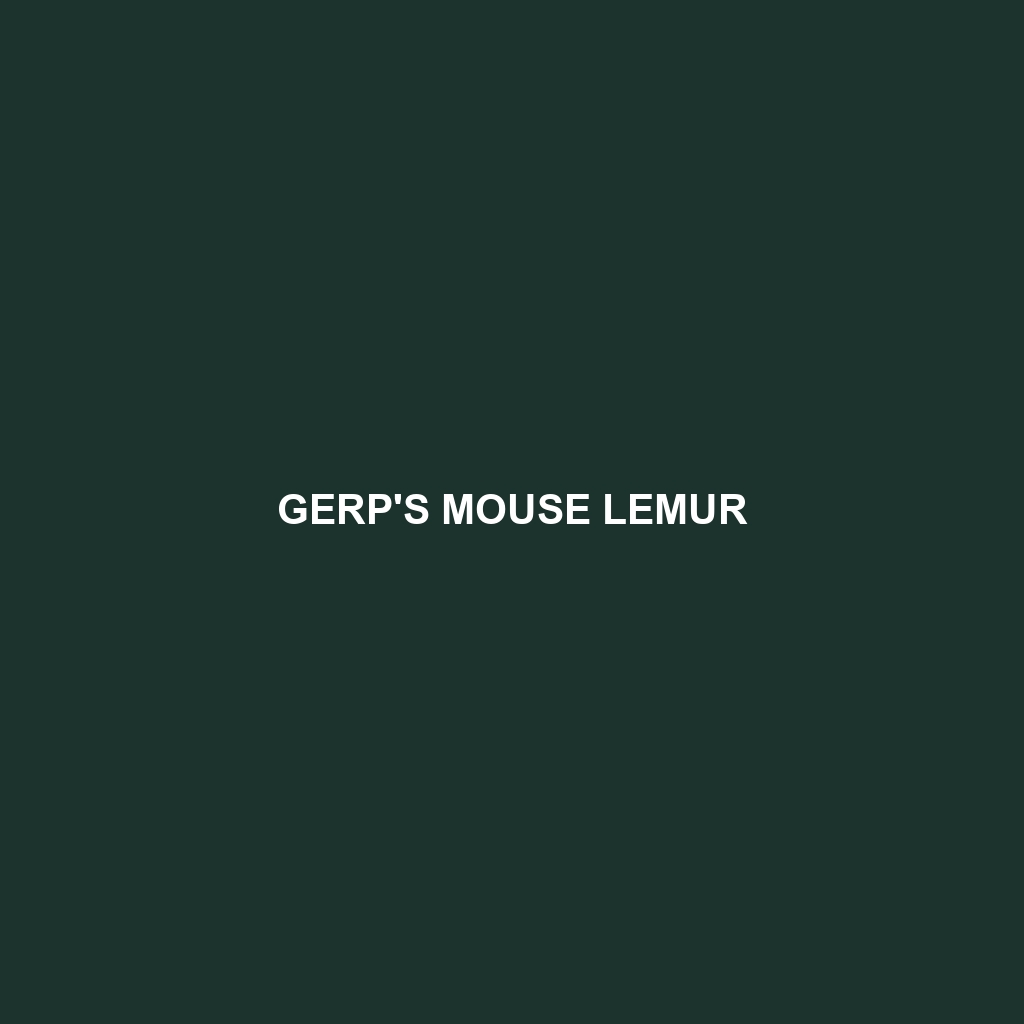Gray-brown Mouse Lemur
Common Name: Gray-brown Mouse Lemur
Scientific Name: Microcebus griseorufus
Habitat
The Gray-brown Mouse Lemur is primarily found in the lush rainforests of Madagascar. These primates thrive in various habitats, including tropical evergreen forests and dry deciduous forests. Their geographic distribution is mainly concentrated in the northeastern and southern parts of the island, where they prefer dense foliage that provides ample shelter and food resources.
Physical Characteristics
Gray-brown Mouse Lemurs are small primates, typically measuring about 12 to 14 centimeters in length, excluding their long tails which can be nearly as long as their bodies. Their fur is generally gray to brown in color, with lighter underparts and darker markings around their large eyes, which are adapted for nocturnal vision. Their distinctive features include a tufted tail and a round face, both of which enhance their charm and make them an object of study for primatologists.
Behavior
These nocturnal creatures exhibit fascinating behaviors, including arboreal locomotion and social interactions within small family groups. Active during twilight hours, the Gray-brown Mouse Lemur is known for its agility and curiosity, often exploring the treetops in search of insects and fruits. Their vocalizations, which include chirps and whistles, serve as important communication tools among individuals.
Diet
The diet of the Gray-brown Mouse Lemur primarily consists of ripe fruits, nectar, and insects, making them omnivorous. Their feeding habits are critical for seed dispersal in their rainforest habitats, contributing to their ecosystem’s health. They have adapted to forage efficiently at night, using their keen sense of smell to locate food.
Reproduction
Gray-brown Mouse Lemurs breed once a year, typically during the warm, wet season from November to January. Females give birth to litters of one to three offspring after a gestation period of approximately 60 days. Parental care is predominantly the responsibility of the mother, who fiercely protects her young until they are mature enough to join the group.
Conservation Status
The Gray-brown Mouse Lemur is currently classified as Vulnerable by the International Union for Conservation of Nature (IUCN). Habitat loss due to deforestation and environmental degradation poses significant threats to their survival. Conservation efforts are crucial to preserving their natural habitats and ensuring the population remains stable.
Interesting Facts
One fascinating aspect of the Gray-brown Mouse Lemur is their remarkable ability to enter a state of torpor, which allows them to conserve energy during periods of scarce food availability. This adaptation helps them survive in their challenging rainforest environment.
Role in Ecosystem
As an integral part of Madagascar’s biodiversity, Gray-brown Mouse Lemurs play a crucial role in their ecosystem. By consuming a variety of fruits and insects, they aid in pollination and seed dispersal, promoting plant growth and maintaining the health of their rainforest habitats. Their interactions with other species highlight the interdependence of life in the ecosystems they inhabit.
